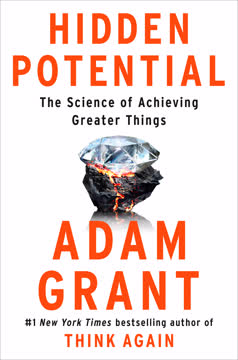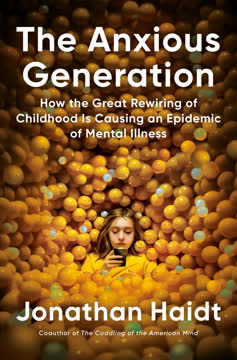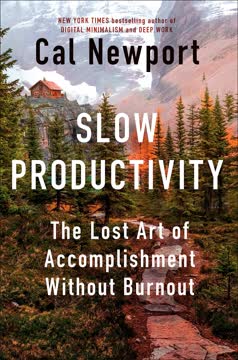つの重要なポイント
1. アップタイム:生産性の新しいパラダイム
アップタイムとは、持続可能なレベルで活動することです。
生産性の再定義。 アップタイムは、生産性を意図と行動の調和に焦点を当てた全体的なアプローチです。単に物事をこなすだけでなく、それを行う際にエネルギッシュで生産的に感じることが重要です。この概念は、仕事の成果と個人の健康のバランスを強調します。
アップタイムの主要な要素:
- やりたいことを明確に定義する
- それを行うための適切な時間と場所を確保する
- 指定された時間内でうまく実行する
アップタイムは、個人が自分の自然なリズムや創造性、集中力、効率のピーク時間を理解することを奨励します。これらのパターンを認識することで、スケジュールや作業環境を最適化し、燃え尽きることなく持続可能な生産性レベルを達成できます。
2. 上位3つの優先事項を定義し、ノーと言うことを学ぶ
何かにイエスと言うことは、常に他の何かにノーと言うことです。
優先順位による明確化。 上位3つの優先事項を特定することで、焦点を絞り、本当に重要なことに時間を費やすことができます。このアプローチは、時間とエネルギーの配分について意識的な選択を迫り、自分を過度に広げることを防ぎます。
効果的な優先順位付けの戦略:
- 定期的に優先事項を再評価する(週次、月次、四半期ごと)
- 日々のタスクをこれらの優先事項に合わせる
- 優先事項に合わないリクエストにはノーと言うことを学ぶ
優先事項を明確に理解していると、ノーと言うことが容易になります。それは非協力的であることではなく、時間を意図的に使うことです。ノーをポジティブな方法で伝え、可能な場合は代替案を提供することで、良好な関係を維持しながら、最も重要なことに時間を確保できます。
3. 効果的なタスク管理のためのリストファネルをマスターする
リストは生産性の心臓です。
構造化されたタスク管理。 リストファネルは、タスクをマクロからミクロレベルまで整理する包括的なシステムです。主な要素は、メインリスト、週次リスト、日次リスト、時間ごとの計画の4つです。
リストファネルの要素:
- メインリスト:すべてのタスクと責任のブレインダンプ
- 週次リスト:メインリストから選ばれた今週完了するタスク
- 日次リスト:その日の具体的なタスクと優先事項
- 時間ごとの計画:その日の進行を詳細にスケジュール
このシステムは、何も見落とさないようにしながら、日々の実行に柔軟性を持たせることができます。これらのリストを定期的に見直し、更新することで、信頼できるシステムを作り、忘れられたタスクや迫る締め切りについてのストレスを軽減します。
4. エネルギーレベルに基づいてスケジュールを最適化する
カレンダーのすべての時間枠が同じではありません。
エネルギーベースのスケジューリング。 一日の個人的なエネルギーパターンを理解することは、生産性を最大化するために重要です。自分の「パワーアワー」(最も集中力とエネルギーが高い時間帯)を特定することで、最も重要なタスクや挑戦的なタスクをこの時間帯にスケジュールできます。
エネルギーベースのスケジューリングの主要な概念:
- パワーアワー:毎日のピーク生産性の2〜3時間
- オフピークアワー:エネルギーが低い時間帯、あまり要求の高くないタスクに適している
- エネルギーポイント:日々のエネルギーを配分するための概念的な方法
タスクを自然なエネルギーリズムに合わせることで、全体的な生産性と作業の質を大幅に向上させることができます。例えば、創造的または戦略的な作業をパワーアワーにスケジュールし、管理業務をオフピークアワーに行うことで、より良い結果と満足のいく作業体験が得られます。
5. 最大効率のためのゼロベースカレンダーを作成する
これは現在の自分のカレンダーを壊すことではなく、未来の自分のためのカレンダーを設定することです。
新たなスタートのスケジューリング。 ゼロベースカレンダーは、既存のカレンダーに小さな調整を加えるのではなく、理想的なスケジュールをゼロから作成することです。このアプローチは、本当に重要なことを優先し、時間を浪費する活動を排除するのに役立ちます。
ゼロベースカレンダーの手順:
- 空白のカレンダーから始める
- 非交渉のコミットメントを追加する
- パワーアワーと緊急の時間ブロックを確保する
- オフピークアワーをスケジュールする
- コントロールポイント(計画とレビューの時間)を追加する
- 日々のテーマを含める
このアプローチを徐々に実施することで、スムーズな移行が可能になります。小さな変更から始め、それが生産性と健康にどのように影響するかを観察します。時間をかけてスケジュールを洗練し、集中作業、協力、個人の時間の最適なバランスを作り出します。
6. 会議を効果的に管理して生産性を向上させる
会議に参加している間ずっとノートパソコンを使っている人がいるなら、その人はおそらくそこにいる必要はなかったでしょう。
会議の最適化。 効果的な会議管理は、生産性を維持するために重要です。会議をより目的に沿った効率的なものにするための戦略を実施することで、集中作業や他の優先事項のための貴重な時間を取り戻すことができます。
効果的な会議のための戦略:
- すべての会議に明確な目的、アジェンダ、期待される成果(PAR)を設定する
- 価値を追加または受け取ることができる参加者に限定する
- 会議をできるだけ短く保つ(「オフィスルール」を使用)
- 明確なアクションアイテムと決定事項でフォローアップする
定期的に繰り返される会議を見直し、それがまだ必要で価値があるかどうかを確認します。優先事項に合わない会議の招待を断ることを恐れないでください。会議の質に高い基準を設定することで、他の人々も同様にすることを奨励し、より生産的な仕事文化を促進します。
7. 技術を賢く活用し、デジタルデトックスを実践する
気を散らすものに対処する最善の方法は、それが起こる前に対処することです。
意図的な技術の使用。 技術は強力な生産性ツールである一方で、重大な気を散らす要因にもなり得ます。鍵は、技術を意図的に使用し、それが注意を奪わないように境界を設定することです。
技術管理のための戦略:
- 通知をカスタマイズして気を散らす要因を最小限に抑える
- キーボードショートカットを使用して効率を高める
- 定期的なデジタルデトックスを実践する(例:ノーテックチューズデー)
- 気を散らさない作業環境を作る
ノーテックチューズデーのような定期的なデジタルデトックスを実施することで、技術との関係をリセットし、より深いつながり、創造性、リラクゼーションのための空間を作り出すことができます。食事中に電話を置く、朝一番にメールをチェックしないなどの小さな変更でも、集中力と健康に大きな影響を与えることができます。
8. ワークライフバランスのためのルーチンと境界を確立する
境界は広く広告されなければ意味がありません。
構造化された柔軟性。 ルーチンを作成し、明確な境界を設定することで、健康的なワークライフバランスを維持し、生活のすべての側面に時間を割り当てることができます。この構造は、生産性のための枠組みを提供しながら、必要に応じて柔軟性を持たせることができます。
効果的なルーチンと境界の主要な要素:
- When:Thenルーチンで習慣を確立する
- 明確に定義され、伝達された作業境界
- 個人的な活動やセルフケアのための定期的な時間
境界を他人に明確かつポジティブに伝えます。例えば、「金曜日には会議を受け付けません」と言う代わりに、「月曜日から木曜日まで会議に対応できます」と言います。このポジティブなフレーミングは、他人があなたの境界を理解し、尊重するのに役立ち、良好な関係を維持します。
9. 生産的な一日のためにマインドフルな朝を育む
朝をコントロールすることで、一日をコントロールできます。
意図的な朝。 一日の始まり方が、その後のすべてに影響を与えます。マインドフルな朝のルーチンを作ることで、集中力を高め、ストレスを軽減し、一日を通じて全体的な生産性を向上させることができます。
マインドフルな朝の要素:
- 最初のコミットメントの前に起きる
- 個人的な活動に従事する(例:瞑想、読書、運動)
- 快適な環境を作る(音楽、照明、準備)
朝のルーチンに瞑想を取り入れることは特に効果的です。毎日10分の瞑想でも、精神の明晰さ、ストレスの軽減、集中力の向上につながります。意図とマインドフルネスで一日を始めることで、より生産的で満足のいく一日を迎える準備が整います。
最終更新日:
FAQ
What's "Uptime: A Practical Guide to Personal Productivity and Wellbeing" about?
- Focus on Productivity and Wellbeing: The book by Laura Mae Martin is a guide to enhancing personal productivity while maintaining wellbeing. It introduces the concept of "Uptime," which is about being operational and productive in all aspects of life.
- Holistic Approach: It emphasizes a holistic view of productivity, integrating work and personal life, and aligning actions with intentions to achieve balance and efficiency.
- Practical Strategies: The book provides practical strategies and tools for managing time, setting priorities, and creating effective routines to maximize productivity and personal satisfaction.
Why should I read "Uptime" by Laura Mae Martin?
- Comprehensive Framework: It offers a comprehensive framework for understanding and improving productivity, making it suitable for anyone looking to optimize their time and energy.
- Actionable Advice: The book is filled with actionable advice and real-life examples that can be easily implemented in daily life to achieve better results.
- Balance and Wellbeing: It focuses not just on getting more done but on doing it in a way that enhances overall wellbeing and life satisfaction.
What are the key takeaways of "Uptime"?
- Productivity Equals Vision Plus Execution: Productivity is about having a clear vision and executing it effectively, balancing both aspects to achieve desired outcomes.
- Importance of Downtime: Downtime is crucial for creativity and productivity, allowing the mind to rest and generate new ideas.
- Setting Boundaries: Establishing and communicating clear boundaries is essential for protecting time and energy, enabling more focused and effective work.
How does Laura Mae Martin define "Uptime"?
- Operational and Productive: Uptime is the time when you are operational and productive, whether at work or in personal life, feeling "in the zone."
- Alignment of Intention and Action: It involves aligning your intentions with your actions to ensure that you are doing the right things at the right time.
- Holistic Productivity: Uptime encompasses all aspects of life, integrating work and personal activities to create a balanced and fulfilling existence.
What is the "List Funnel" method in "Uptime"?
- Organized Task Management: The List Funnel is a system for organizing tasks from macro to micro levels, starting with a Main List and narrowing down to Daily Lists.
- Main List: This is a comprehensive list of all tasks and ideas, categorized by type of action or energy required.
- Daily and Weekly Lists: These lists break down tasks into specific actions for each day or week, ensuring that priorities are addressed and time is used effectively.
How does "Uptime" suggest dealing with procrastination?
- Identify the Why: Understanding why a task is being procrastinated on is crucial, whether it's due to it being boring, frustrating, or overwhelming.
- Swiss Cheese Method: Break down tasks into smaller, manageable parts to make starting easier and reduce the mental barrier.
- Use of Routines: Establish routines and use the when:then method to create triggers for starting tasks, making them more automatic and less daunting.
What role does downtime play in achieving "Uptime"?
- Essential for Creativity: Downtime allows the brain to rest and generate new ideas, which is essential for creativity and problem-solving.
- Balance and Recharge: It provides a necessary balance to periods of intense productivity, helping to recharge energy and prevent burnout.
- Intentional Breaks: The book emphasizes the importance of scheduling intentional breaks and downtime to enhance overall productivity and wellbeing.
How does Laura Mae Martin recommend setting priorities in "Uptime"?
- Top Three Priorities: Focus on identifying and clearly defining your top three priorities to drive focus and decision-making.
- High-Impact Tasks: Break down priorities into high-impact tasks that directly support achieving them, ensuring alignment with goals.
- Regular Reevaluation: Regularly reevaluate and adjust priorities based on changing circumstances and stages of life to maintain relevance and effectiveness.
What are some of the best quotes from "Uptime" and what do they mean?
- "Productivity = Vision + Execution": This quote emphasizes the dual nature of productivity, requiring both a clear vision and effective execution to achieve success.
- "Balance is the new busy": It challenges the traditional notion of productivity as constant busyness, advocating for a balanced approach that prioritizes wellbeing.
- "When your intention matches your action, it’s productive": This highlights the importance of aligning intentions with actions to ensure that efforts are directed towards meaningful outcomes.
How does "Uptime" address the challenges of hybrid work environments?
- Homebasers vs. Outfielders: The book identifies two types of workers in hybrid environments and provides strategies for each to optimize productivity.
- Calendar Optimization: It suggests optimizing calendars for connection and focus, scheduling tasks based on where and how you work best.
- Collaboration Tactics: Offers practical tips for effective collaboration in hybrid settings, including clear communication and setting rules of engagement.
What is the "Zero-Based Calendaring" approach in "Uptime"?
- Fresh Start Mindset: Zero-Based Calendaring involves starting with a blank calendar and building an ideal schedule from scratch, focusing on current needs.
- Building Blocks: It emphasizes identifying non-negotiable commitments, Power Hours, and points of control to create a balanced and effective schedule.
- Gradual Implementation: Encourages gradual implementation of the ideal schedule, making small changes over time to align with personal and professional goals.
How can "Uptime" help improve email management?
- Laundry Method: The book introduces the Laundry Method for email management, which involves sorting emails into categories like Respond, Read, Revisit, and Relax.
- Inbox Zero: Emphasizes achieving inbox zero by regularly sorting and addressing emails, reducing clutter and stress.
- Efficient Workflow: Provides strategies for creating an efficient email workflow, including using filters, labels, and batch processing to save time and energy.
レビュー
本書『Uptime』は、主に肯定的な評価を受けており、読者はその実践的な生産性とワークライフバランスに関するアドバイスを称賛している。多くの人々が、本書の戦略がタスクの整理、時間管理、集中力の向上に役立つと感じている。一部のレビュアーは、他の生産性に関する書籍との類似点を指摘しているが、現代のデジタル時代に即したアプローチを評価している。批評家の中には、いくつかのアドバイスがすべての仕事の状況に適用できるわけではないと指摘する者もいる。全体として、読者は本書の簡潔で実行可能なヒントと、生産性とともにウェルビーイングを重視する点を高く評価している。
Similar Books














